Ever found yourself pondering surviving natural disasters? Well, you’re not alone! With the rise in frequency of these terrifying events, it’s become quite critical to keep ourselves prepared.
I’ve poured over countless survival guides and studies and boiled down the key steps you can take to come out on top in any such unsettling situation. Interested? Keep reading to unveil these life-saving secrets!
Key Takeaways
- Identify the specific natural disasters that are common in your area and understand their potential risks and impacts.
- Create a well-thought-out plan for finding or creating a safe shelter during a disaster, and make necessary modifications to your home to increase its resilience.
- Stockpile non – perishable food, clean water, flashlights, batteries, and first aid kits to ensure you have essential supplies during a natural disaster.
- Have alternative power sources and communication methods ready in case of power outages. Also learn basic survival skills like starting a fire and purifying water for emergency situations.
Identify Your Threats
To survive natural disasters, it is crucial to identify the specific threats you may face in your area and understand their potential impacts.
Understand the natural disasters that are common in your area
In my area, we often face floods and severe storms. These are known as hydrological hazards. They also include landslides and wave action. There have also been times when wildfires raged due to lightning strikes.
It’s true, these natural disasters can’t be stopped. Yet, knowing the type of risks helps in planning for them better. This is why I keep an eye on weather alerts and other important updates about changes in nature around me.
Research the specific risks and potential impacts of each type of disaster
Disasters can strike at any time. They are part of our world. It is important to know about them so we can be ready when they happen. Different disasters bring different risks and impacts.
For example, floods might ruin homes and cut off roads. Earthquakes may cause buildings to fall down or start fires that burn for days. Both could lead to people getting hurt, losing their stuff or being forced out of their homes.
To stay safe, you need to find out what kinds of disaster are most likely where you live or plan to go on vacation. Then study each one’s specific risks and possible impacts. Use weather apps, news reports or information from the local emergency response team as your sources of knowledge about threats in your area.
After that, figure out a plan for handling those dangers if they come true someday.. soon or later! Remember – knowing more means fearing less and acting smarter before a crisis hits hard!
Basics of Surviving Natural Disasters
Learning how to stay safe during natural disasters is key. First, you need to know what disasters can happen in your area. This could be floods, droughts, earthquakes or hurricanes.
You should research each one and understand the risks they bring.
Next, have a plan ready. Your plan should include where to find clean water and non-perishable food when normal supplies stop. Also add in non-flame light sources like flashlights with extra batteries for dark times with no power.
Having first aid items on hand is another good idea. They are needed if you get hurt during the disaster or after it ends while help is coming.
If big earthquakes are common where you live, make sure to watch out for them too! These quakes kill many people every year because they’re so strong and sudden.
Lastly, don’t forget about hurricanes if you’re near the shorelines or islands. Make sure you know all evacuation routes and how to get to safety fast when a hurricane alert comes up.
Secure Your Shelter
Create a plan to find or create a safe shelter during a disaster and make necessary modifications to your home for added resilience.
Create a plan for finding or creating a safe shelter during a disaster
Having a plan for finding or creating a safe shelter during a disaster is crucial. Here are some important steps to help you prepare:
- Identify safe areas in your home, workplace, or community that provide protection during emergencies.
- Make sure there are no hazards nearby, like windows or tall trees, that could cause damage.
- Reinforce your shelter area by securing heavy furniture and objects that could become projectiles during strong winds.
- Stock your shelter area with emergency supplies such as flashlights, batteries, first aid kits, and a battery-powered radio. This will ensure you have what you need in case of power outages or other disruptions.
- If you live in an area prone to tornadoes or hurricanes, consider installing a storm shelter or reinforced room in your home.
- Create an evacuation plan in case you need to leave your home. Identify the safest routes and have alternative locations where you can seek shelter if needed.
- Stay informed about weather alerts and follow local authorities’ instructions. It’s important to be aware of any evacuation orders or other safety guidelines.
Make necessary modifications to your home to make it more resilient
I want to share with you some ways to make your home more resilient during natural disasters. Here are some steps you can take:
- Assess the potential risks: Understand the types of natural disasters that are common in your area and the specific risks they pose to your home.
- Reinforce vulnerable areas: Strengthen weak points in your home, such as windows and doors, to withstand strong winds and impacts.
- Improve your roof: Ensure that your roof is in good condition and consider reinforcing it with hurricane straps or metal bracing.
- Install storm shutters or impact-resistant windows: These can protect your windows from flying debris during severe storms.
- Elevate appliances and electrical systems: Raise appliances, heating units, and electrical systems off the ground to minimize damage from flooding.
- Secure heavy items: Anchor heavy furniture and appliances to prevent them from tipping over during earthquakes or strong winds.
Stock Food, Water, and Supplies
Build a stockpile of non-perishable food, clean water, flashlights, batteries, and first aid kits to ensure you have the necessary supplies during a natural disaster.
Build a stockpile of non-perishable food and clean water
During a natural disaster, it’s important to have enough food and water to sustain yourself. Here are some key items you should consider including in your emergency stockpile:
- Non – perishable foods like canned goods, dry mixes, and pantry staples.
- Foods that won’t make you thirsty, as clean water supplies may be limited.
- Familiar comfort foods that can help boost morale during challenging times.
- Items like peanut butter, whole-wheat crackers, nuts, trail mixes, cereal, and granola bars are highly recommended.
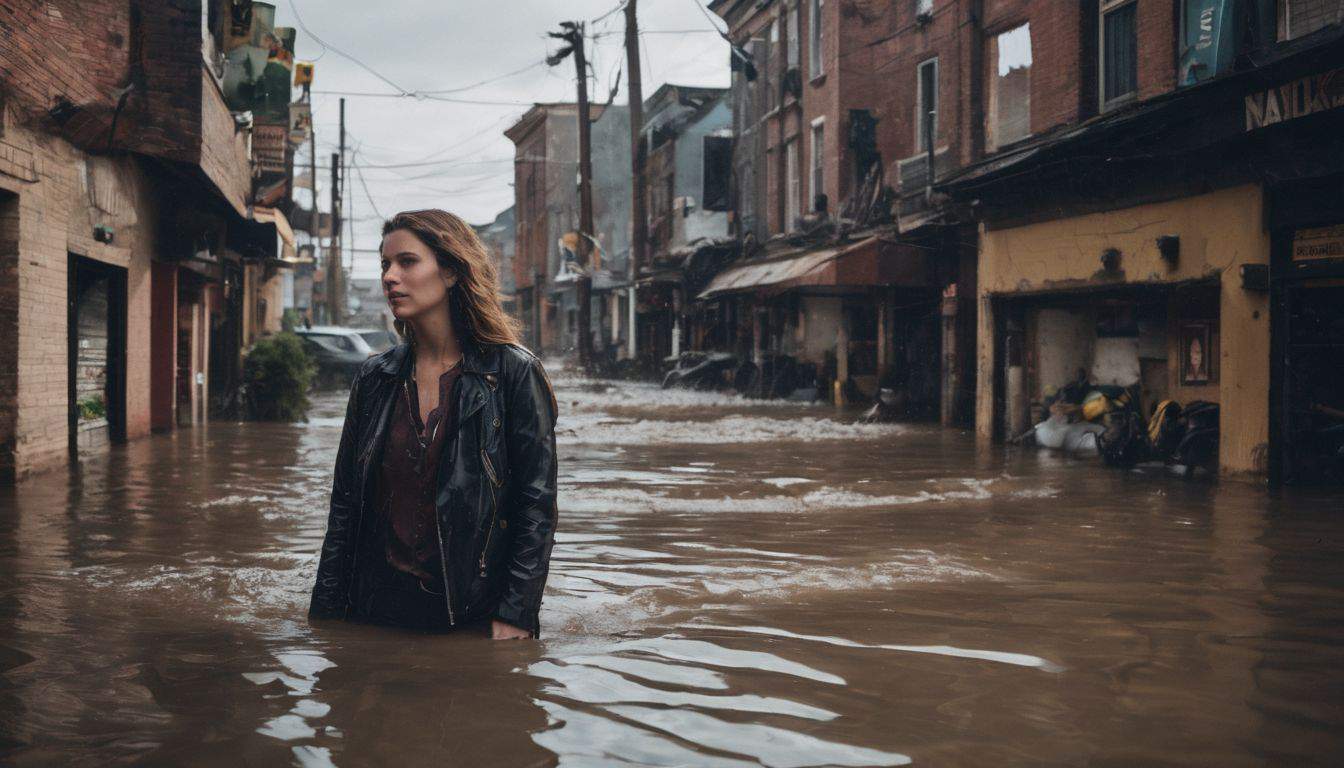
Gather essential supplies such as flashlights, batteries, and first aid kits
When preparing for natural disasters, it’s crucial to gather essential supplies. Here are some important items to include in your emergency kit:
- Flashlights: Make sure you have a few flashlights stored with extra batteries. This will provide you with light during power outages.
- Batteries: Stock up on batteries of different sizes, as they are essential for powering your flashlights and other electronic devices.
- First aid kits: Keep a well-stocked first aid kit that includes bandages, antiseptic ointment, pain relievers, and any necessary prescription medications.
- Food: Have non-perishable food items in your emergency kit, such as canned goods, protein bars, and dried fruits. Remember to rotate them regularly to ensure freshness.
- Water: Store enough clean water for each person in your household for at least three days. Aim for one gallon of water per person per day.
- Blankets: Keep warm blankets or sleeping bags in your emergency kit to stay comfortable during power outages or if you need to evacuate.
Shore Up Your Off-Grid Capability
To prepare for potential power outages during a natural disaster, it is crucial to have alternative power sources and communication methods ready.
Have alternative power sources and communication methods in case of power outages
During a natural disaster, it’s crucial to have backup options for power and communication. Here are some ways to be prepared:
- Use renewable energy: Consider investing in solar panels or wind turbines to generate your own electricity during an outage.
- Have backup power sources: Keep a generator or battery-powered system on hand to provide electricity when the grid goes down.
- Use portable chargers: Have portable phone chargers and battery packs ready to keep your devices powered up even without electricity.
- Stock up on batteries: Make sure you have a supply of batteries for flashlights, radios, and other essential devices.
- Use alternative communication methods: Invest in two-way radios or satellite phones that can work without traditional cell towers or landlines.
- Stay informed with battery-powered devices: Have a battery-powered radio or portable TV so you can receive emergency updates and information during outages.
- Plan ahead for communication needs: Create a contact list with important numbers and addresses in case you need to reach out to authorities or emergency services.
Learn basic survival skills such as starting a fire and purifying water
Starting a fire and purifying water are essential survival skills that every enthusiast should know. They can help you stay warm, cook food, signal for help, and ensure you have clean drinking water. Here are some important tips to remember:
- Firemaking: Knowing how to start a fire is crucial. Gather dry materials like twigs, leaves, and bark. Use a fire starter or friction methods like rubbing two sticks together to create sparks.
- Survival techniques: Learn different methods of building fires such as the teepee or log cabin structure. This will help you control the size and intensity of the fire.
- Wilderness skills: Practice identifying safe areas for fires and keep them away from flammable objects.
- Water purification: In an emergency situation, water sources may not be safe to drink. Learn how to filter and purify water using methods like boiling, chemical treatments, or using a portable water filter.
- Cooking methods: Cooking on an open fire can be challenging but knowing how to prepare meals is important. Use simple tools like skewers or aluminum foil packs to cook food over the flames.
- Rescue signaling: Build your fire in an open area where it can be seen from a distance. This signals for help when needed.
- Warmth provision: Fires provide warmth in cold environments. Stay close to the fire without getting too close as it can be dangerous.
- Predator deterrence: Keep your fire burning through the night to deter animals from approaching your campsite.
- Cooking heat source: Fires can be used to boil water for cooking or disinfecting utensils.
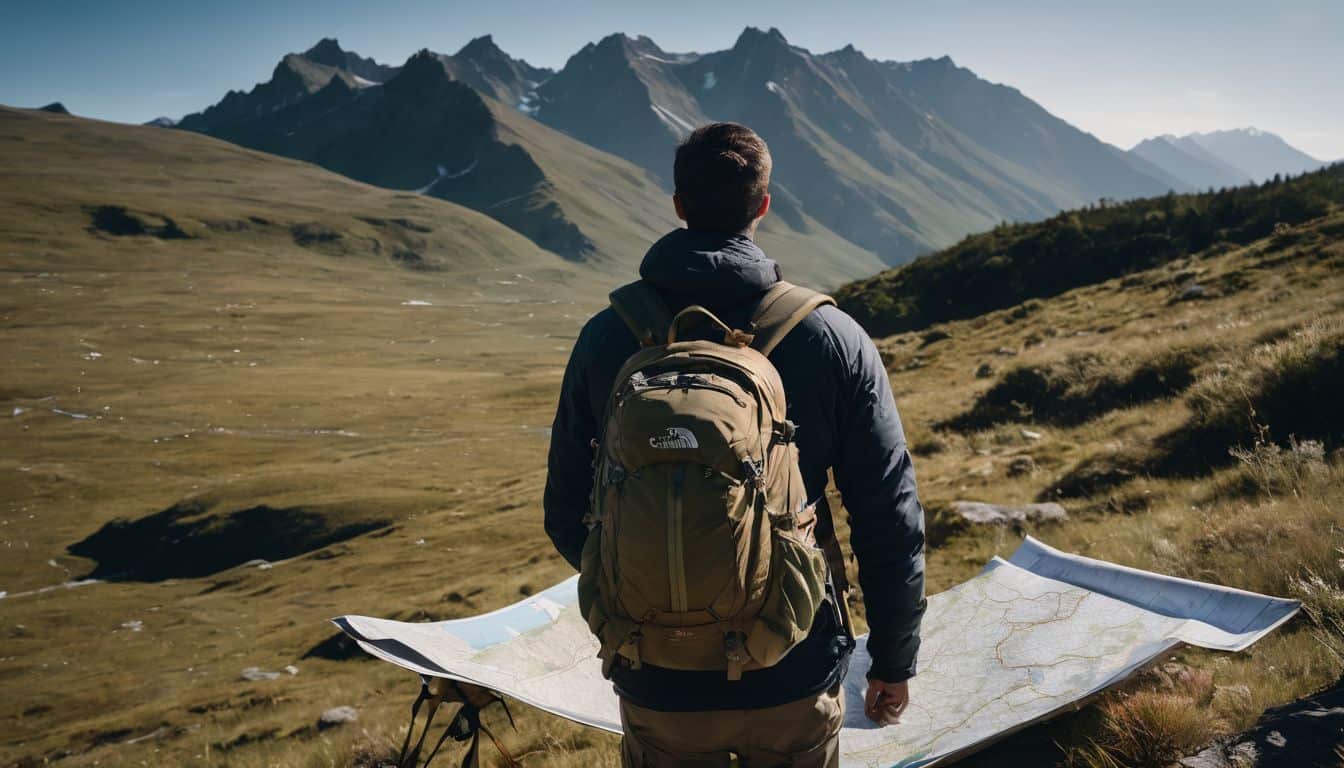
Secure a Safe Retreat
Identify a safe location outside of your immediate area where you can evacuate to and create a plan for transportation, knowing the best routes to get there.
Identify a safe location outside of your immediate area where you can evacuate to
Finding a safe place to evacuate to is crucial in natural disasters. Here are some important steps to help you identify a safe location:
- Research potential safe areas: Look for locations outside your immediate area that are less prone to the specific type of disaster you might face. Consider areas on higher ground or away from flood zones, fault lines, or coastal regions.
- Reach out to family and friends: Contact relatives or friends who live in safer areas and discuss the possibility of staying with them during emergencies. Having a trusted person to rely on can provide comfort and support.
- Scout for remote locations: Identify possible temporary refuges in remote areas, such as national parks or campgrounds far from densely populated regions. These places could offer relative safety and resources.
- Explore community shelters: Look into established shelters designated by local authorities or emergency management agencies. These facilities often have emergency plans in place and can provide temporary accommodation during disasters.
- Consider extended stay options: Evaluate opportunities for longer-term stays, like rental properties or hotels outside the danger zone, especially if your area is prone to prolonged disasters or evacuations.
- Plan transportation routes: Determine the best routes to reach your chosen safe location quickly and safely. Take into account potential traffic congestion and alternate routes in case of road closures.
- Stay informed about evacuation orders: Monitor weather alerts and emergency notifications closely, so you know when it’s time to evacuate and make your way to the designated safe location.
Have a plan for transportation and know the best routes to get there
Transportation is crucial during natural disasters. It’s important to have a plan in place and know the best routes to get to a safe location. Here are some key points to consider:
- Map out multiple evacuation routes ahead of time.
- Stay informed about road closures and alternative routes.
- Consider different modes of transportation, such as cars, bikes, or walking.
- Have backup options for transportation in case your primary method is unavailable.
- Prepare your vehicle with an emergency kit, including necessary supplies and tools.
- Coordinate with others in your community to carpool or convoy if needed.
- Practice driving or following the routes to familiarize yourself and save time during emergencies.
Develop a Prepared Community
Establish relationships with neighbors and form a community emergency response team, working together to create disaster plans and support each other during emergencies.
Establish relationships with neighbors and form a community emergency response team
Forming a community emergency response team is crucial for surviving natural disasters. By establishing relationships with your neighbors, you can work together to prepare and support each other during emergencies. Here are some steps to follow:
- Get to know your neighbors: Take the initiative to introduce yourself and build relationships with those living around you.
- Organize community meetings: Schedule regular meetings where you can discuss emergency plans and share information about potential threats in your area.
- Create a communication network: Exchange contact information with your neighbors so that you can stay connected during emergencies. Consider starting a group chat or using a neighborhood social media platform.
- Share resources: Pool together essential supplies like food, water, and first aid kits. This will ensure that everyone has access to the necessary items during a disaster.
- Assign roles and responsibilities: Determine what skills each person in the community possesses and assign specific tasks accordingly. This way, everyone can contribute their expertise when needed.
- Train as a team: Look for local CERT programs or other disaster response training opportunities in your area. By participating together, you can learn important skills like first aid, search and rescue techniques, and fire safety.
- Practice drills and simulations: Regularly conduct emergency preparedness drills with your community to reinforce what you have learned in training sessions.
Work together to create disaster plans and support each other during emergencies
Creating disaster plans and supporting each other during emergencies is crucial for our survival. Here are some important ways we can work together:
- Establish relationships with your neighbors and form a community emergency response team. This will help us coordinate efforts and provide support to each other when disaster strikes.
- Work together to create disaster plans that include evacuation routes, designated meeting points, and communication strategies. By planning ahead, we can ensure that everyone knows what to do and where to go in case of an emergency.
- Share resources and skills within the community. Pooling our supplies and knowledge can increase our chances of survival during a disaster. For example, some members may have medical training or access to essential equipment that can be beneficial to others.
- Conduct drills and practice emergency scenarios as a community. By practicing together, we can identify any weaknesses in our plans and make necessary adjustments.
- Stay informed about the latest emergency notifications and weather alerts. Sharing this information with your community will ensure that everyone is aware of potential threats and can take appropriate actions.
- Support each other emotionally. Disasters can be stressful, so it’s essential to provide emotional support to one another during these difficult times. Check in on your neighbors, offer a listening ear, or provide comfort when needed.
Learn Self-Defense
Take self-defense classes to acquire the skills needed to protect yourself and your loved ones during chaotic situations, while developing situational awareness and practicing personal safety strategies.
Take self-defense classes to protect yourself and your loved ones during chaotic situations
Self-defense classes can be a game-changer when it comes to keeping you and your loved ones safe during chaotic situations. Here’s why:
- Boost self-esteem and confidence: Learning self-defense skills can give you a sense of empowerment and boost your self-confidence, which is especially important for women.
- Recognize and respond to violence: Self-defense classes teach you how to recognize potential threats and respond effectively to violence, ensuring the safety of yourself and your loved ones.
- Protect friends and family: Self-defense is not just about personal protection; it also equips you with the skills to protect your friends and family during challenging situations associated with natural disasters.
- Practical techniques: Taking self-defense classes provides you with practical techniques that you can use to defend against attacks, giving you the tools to navigate potentially dangerous situations.
- Important for everyone: Both men and women can benefit from learning self-defense as it teaches them how to protect themselves and their loved ones in chaotic situations linked to natural disasters.
Develop situational awareness and practice personal safety strategies
Developing situational awareness and practicing personal safety strategies are essential for surviving natural disasters. Here are some important ways to dominate in these areas:
- Train your mind to be aware of your surroundings at all times.
- Understand and heed warning signs to reduce risks and make better decisions.
- Learn stress management techniques to handle the pressure during disaster situations.
- Educate yourself about situational awareness and self – awareness as crucial skills.
- Take self – defense training to enhance personal safety in emergency situations.
- Practice mindfulness to stay focused and calm in chaotic circumstances.
- Stay updated on emergency notifications and weather alerts for timely response.
Stay Informed and Prepared
Stay updated on weather alerts and emergency notifications to ensure you have the most current information during a natural disaster.
Stay updated on weather alerts and emergency notifications
To stay prepared for natural disasters, it’s crucial to stay updated on weather alerts and emergency notifications. By doing so, you can receive lifesaving information quickly and be aware of any potential risks in your area.
One way to do this is by signing up for weather alerts via text. This allows you to receive important updates directly to your phone, keeping you informed and prepared. Remember, the Wireless Emergency Alerts (WEA) system is available nationwide and provides 24/7 access to weather-hazard information and safety alerts.
So make sure you take advantage of this resource and stay informed about any emergencies that may arise in your area.
Regularly review and update your emergency plans and supplies
Regularly reviewing and updating your emergency plans and supplies is crucial for staying prepared and informed during natural disasters. Here are some important steps to consider:
- Check your emergency plan: Review the details of your family emergency plan and make any necessary updates. Ensure that everyone in your household knows what to do in the event of a disaster.
- Evaluate your supplies: Take inventory of your emergency supplies, including food, water, batteries, flashlights, and first aid kits. Check expiration dates and restock any items that are running low.
- Update contact information: Make sure you have the most up-to-date contact information for family members, friends, and local authorities in case you need to reach out for help or share important updates.
- Stay informed: Keep an eye on weather alerts and emergency notifications in your area. Sign up for local alerts or download reliable apps to receive real-time information about potential threats.
- Practice drills: Conduct regular drills with your family to practice evacuation routes and other safety procedures. This will ensure that everyone is familiar with the steps they need to take during a disaster.
- Plan for special needs: If you have any family members with special needs or medical conditions, make sure your emergency plan includes specific provisions for them.
- Maintain communication devices: Regularly check that your cell phones, radios, and other communication devices are charged and in working order. Consider having alternative power sources available in case of power outages.
Conclusion on Surviving Natural Disasters
Surviving natural disasters requires preparation and knowledge. By understanding the specific risks in your area, securing your shelter, stockpiling essential supplies, and developing a prepared community, you can increase your chances of survival.
Learning self-defense and staying informed are also crucial. With these seven steps, you can dominate during natural disasters and protect yourself and loved ones from harm.
FAQs on Surviving Natural Disasters
1. What are some ways to prepare for a natural disaster?
Some ways to prepare for a natural disaster include creating an emergency kit with essential supplies, making a family communication plan, and staying informed about potential risks in your area.
2. How should I stay safe during a natural disaster?
To stay safe during a natural disaster, you should follow evacuation orders if given, seek shelter in sturdy buildings or designated safe areas, and listen to updates from local authorities.
3. What should I do after a natural disaster?
After a natural disaster, you should first ensure your safety and the safety of others around you. Then, assess any damages to your property and report them to the appropriate authorities or insurance company.
4. How can I help others during or after a natural disaster?
You can help others during or after a natural disaster by checking on neighbors who may need assistance, donating money or supplies to reputable relief organizations, or volunteering with local recovery efforts.
5. Where can I find more information about surviving natural disasters?
You can find more information about surviving natural disasters by visiting websites of government agencies such as FEMA (Federal Emergency Management Agency) or contacting your local emergency management office.

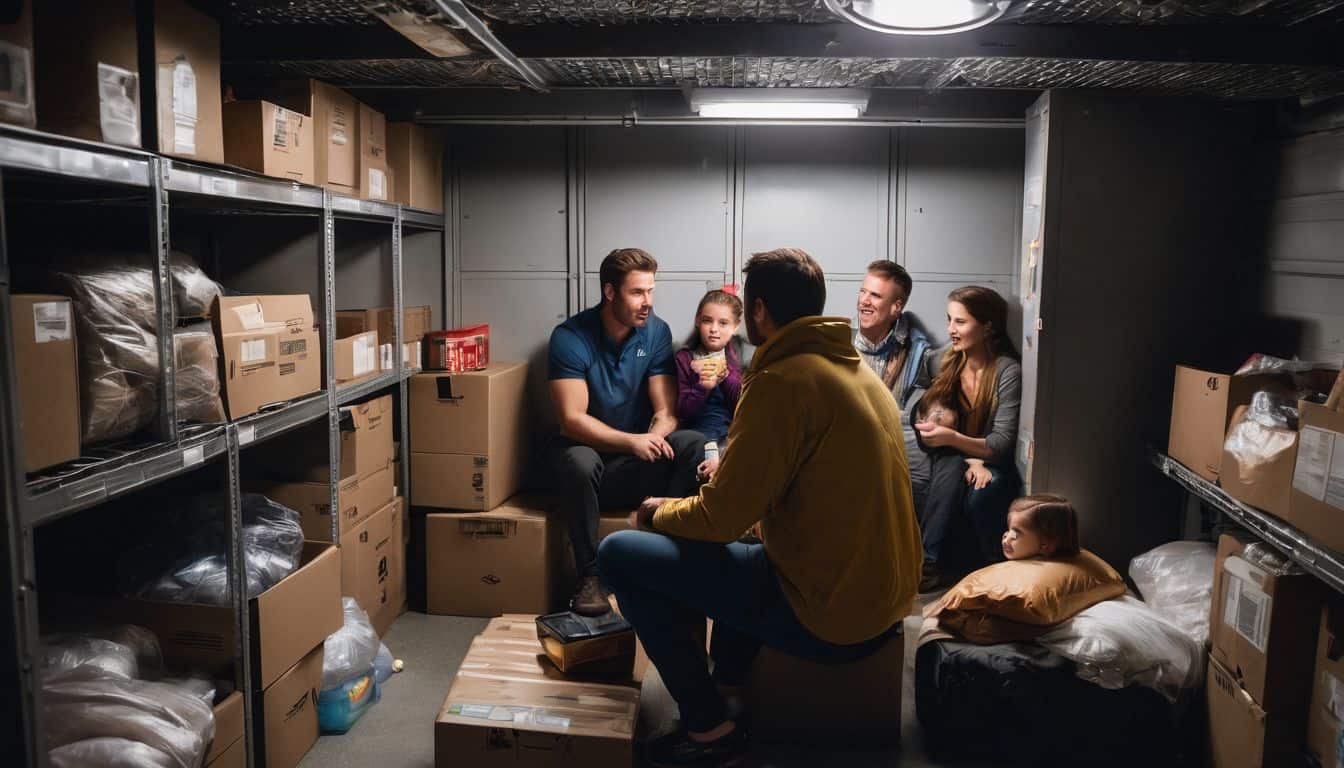

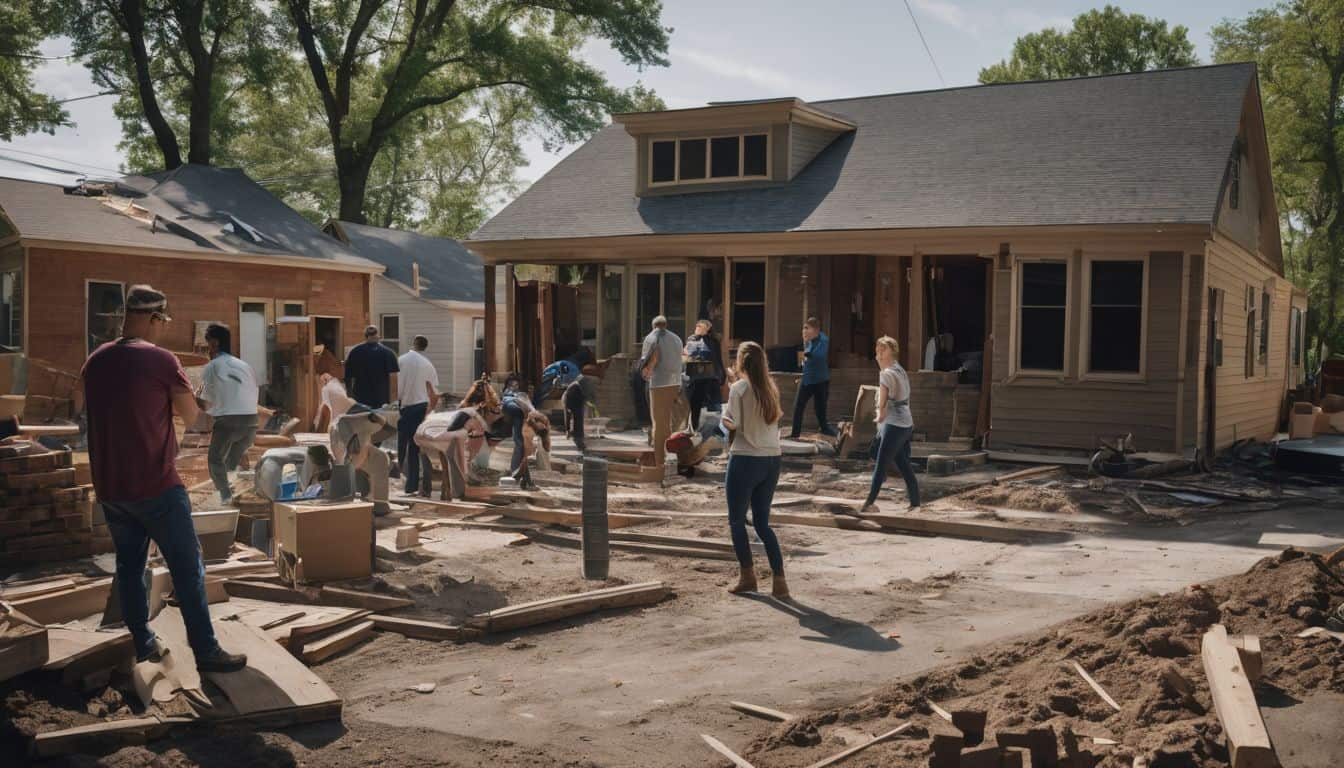
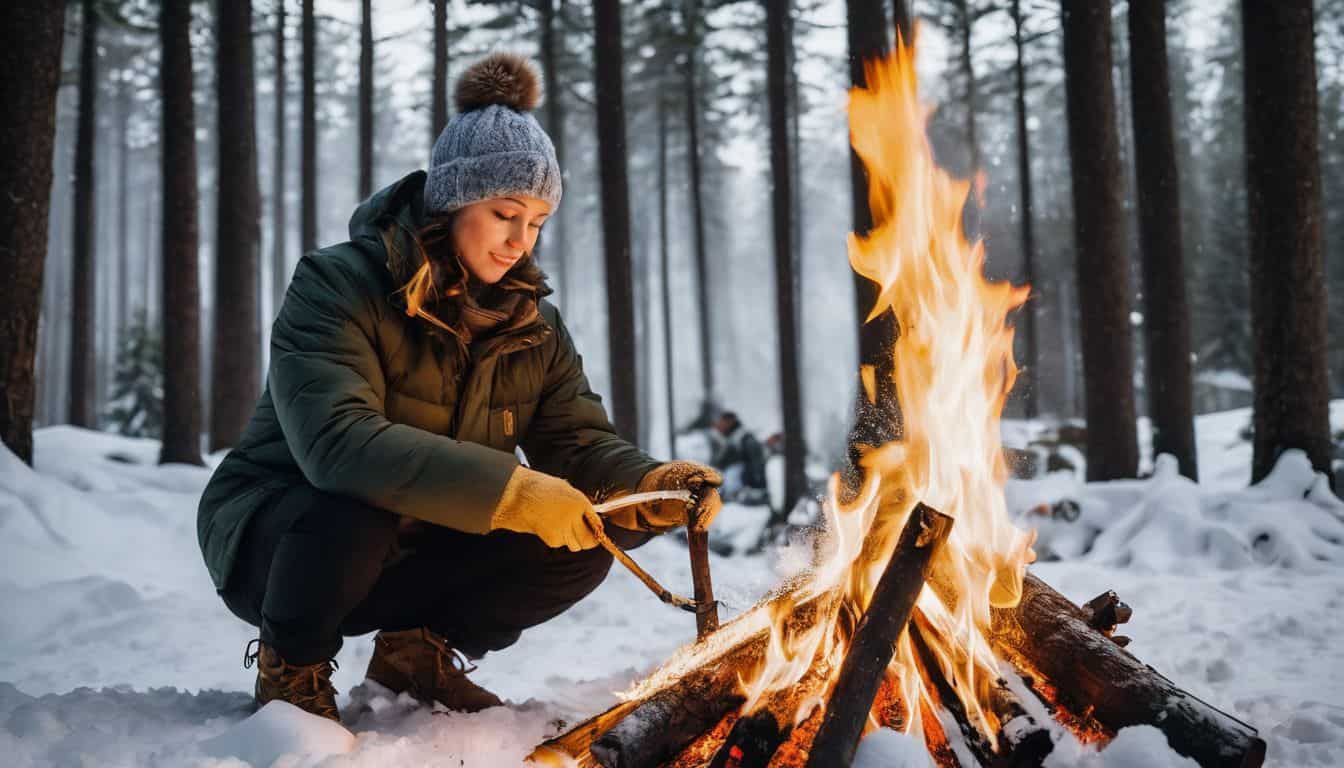
Leave a Reply